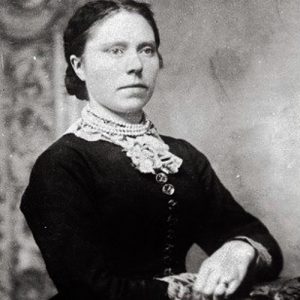Every now and then I notice totally accidental trends in my reading. Not too long ago it was portal fantasy, repeated traipses through magical doorways leading to other worlds. Those adventures filled me with whimsy and also a dash of pre-pandemic wanderlust. Now I find myself on a darker path. One with a lot less magic, a lot more feminine rage, poison, and murder.

Poison has historically been touted as a "woman's weapon". For example, in the 1945 movie, Pursuit to Algiers, Sherlock Holmes says it is so, as does Grand Maester Pycelle (an objectively horrible person) in George R.R. Martin's Game of Thrones.
Ned Stark: I've heard it said that poison is a woman's weapon.
Grand Maester Pycelle: Yes. Women, cravens, and eunuchs.
It seems that poison would indeed be the great equalizer, a silent killer requiring no physical confrontation, and a death that (until certain advancements in forensic science) could be attributed to any number of natural causes. But before we get into female poisoners, let's get one thing straight: Calling it a "woman's weapon" can be both disingenuous and accurate, depending on what is meant. Men have and always have had a monopoly on all kinds of murder. According to the US Department of Justice's Report on Homicide Trends between 1980 and 2008, of all poison killers in that time period 60.5% were male and 39.5% female. However, that almost 40% proportion of poison murders committed by women is indeed a great deal more than they represent in other, bloodier categories of killing.
A month or so ago I read In the Garden of Spite by Camilla Bruce, a novel of Belle Gunness, the Black Widow of La Porte. Full disclosure: I knew next to nothing about Belle Gunness before reading this book. All I knew about her was that Wednesday Addams was desperate for her serial killer trading card. And with good reason, as Gunness remains one of the most prolific female serial killers in American history, with a victim count estimated to be in the dozens as she poisoned her way through Indiana and Illinois in the late 1800s and early 1900s. In this macabre and oh-so-suspenseful novel, Camilla Bruce speculates that Belle suffered a grave injustice at the hands of a young lover, one that left her traumatized and poised to take absolutely no crap from any man ever again.
Belle's poison of choice was strychnine, a colorless, bitter, crystalline alkaloid commonly used a pesticide. And her first verified victim was her first husband, Mads Sorenson. If the version of Mads presented in this book is to be believed, he was an unassuming fellow who just wanted a simple life with a loving family. Here's how the patriarchy got him anyways (if you will allow me this one slight spoiler): This utter fool fell sick half a dozen times until he was convinced that his wife was poisoning him. His solution was not divorce, or even *gasp* preparing his own food, as both were virtually unheard of at this time. Instead he simply beseeched his criminally insane wife to please stop doing that.
Belle eventually fatally dosed him with strychnine on the very day that one of his insurance policies lapsed and the other began. This resulted in a very eyebrow raising double payout for Belle but there simply wasn't any evidence to convict or even arrest her for his murder. It was after the relative ease of poisoning poor, guileless Mads that Belle's killing eventually reached spree proportions, but you'll have to read In the Garden of Spite for the grisly details...
Serendipitously, as soon as I was finished reading the story of Belle Gunness, my hold for Sarah Penner's The Lost Apothecary came in. Although a far departure in tone, this absolutely stunning debut also deals with a long ago murderess and her preferred method of killing.
Told over dual timelines, the story of Nella, an unconventional apothecary in the back alleys of London in the 18th century, runs parallel to the story of Caroline, a woman dealing with her messy marriage in the present day. Caroline finds a vial with an unusual trademark in the River Thames and this sets her down a path of discovery that will ultimately change her life.
The chapters involving Nella and her 12 year old protege, Eliza, stole the show for me. Like Belle, Nella also suffered at the hands of a horrible man, turning her reputable trade of healing into an equally esteemed but secret trade of "curing" women of their abusive, unfaithful, or otherwise undesirable "ailments". She operates under only two rules: 1. The poison must never be used to harm another woman. And 2. The names of the murderer and her victim must be recorded in the apothecary's register.
In the 18th century there was little control over substances like arsenic, mercury, and opium and they could be found in most households. Nella employed all of these in her remedies for her clients, but a favorite was nux vomica. Also known as strychnine.
The Lost Apothecary is a surprisingly tender novel, evoking feelings of sisterhood through the exploration of Nella and Eliza's relationship, and the connection Caroline develops with the two women from the distant past and their sordid secrets. In the Garden of Spite, on the other hand, is full of shadow, delving into Belle's psychology as much as her dark deeds.
The common thread is poison, of course, but also women consumed by their bitterness and rage. Perpetual victims of the time and place they were born, always firmly under the thumbs and at the mercy of men. I highly recommend both books for their very different qualities. You'll be horrified, bemused, shocked, even touched...but certainly you will walk away with a firm understanding that hell hath no fury like a woman desperate for agency.
-Leah Newton is a Readers' Services Assistant at Lawrence Public Library




Add a comment to: Pick Your Poison